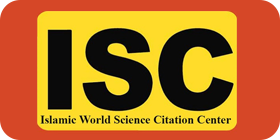اثربخشی مداخله روانی- تربیتی هوش متبلور ماهر بر افزایش هوش سیال در دانش آموزان دوره دوم ابتدایی شهر تهران
کلمات کلیدی:
هوش سیال, هوش متبلور, هوش چندوجهی ماهر, مداخله روانی-تربیتی ماهر, دانش آموزان ابتداییچکیده
هدف: هدف از پژوهش حاضر بررسی اثربخشی بسته مداخله روانی- تربیتی هوش متبلور ماهر بر هوش سیال دانش آموزان دوره دوم ابتدایی شهر تهران بود.
روششناسی: این پژوهش از نظر هدف کاربردی و از نظر روش گردآوری دادهها در زمره پژوهشهای شبه آزمایشی با الگوی پیش آزمون پس آزمون و پیگیری با گروه کنترل بود. جامعه آماری شامل دانش آموزان دوره دوم ابتدایی (10 تا 12 سال) شهر تهران در سال تحصیلی 1403-1402 بود. تعداد 40 نفر از این دانش آموزان با روش خوشهای مرحلهای انتخاب شده و به صورت تصادفی در گروه آزمایش و کنترل جایگزین شدند. گردآوری دادهها با آزمون چندوجهی هوش سیال ماهر (MMFIT) صورت گرفت. گروه آزمایش بسته مداخله روانی- تربیتی هوش متبلور ماهر را طی 14 جلسه 90 دقیقهای دریافت کردند. گروه کنترل در این فاصله مداخلهای دریافت نکردند. تجزیه و تحلیل دادهها با تحلیل واریانس آمیخته چندمتغیره و نرم افزار SPSS نسخه 27 انجام شد.
یافتهها: یافتهها نشان داد که بسته مداخله روانی-تربیتی هوش متبلور ماهر بر ابعاد هوش سیال (22/0=h2 تا 83/0=h2) تأثیر معناداری دارد (001/0>P).
نتیجهگیری: بر اساس یافتههای این پژوهش بسته مداخله روانی- تربیتی هوش متبلور ماهر بر افزایش هوش سیال (ادراک، استدلال، توجه، حافظه و سرعت پردازش) کودکان 10 تا 12 سال موثر است و میتواند به عنوان یک مداخله اثربخش در این گروه سنی مورد استفاده قرار گیرد.
دانلودها
مراجع
Ackley, D. (2016). Emotional intelligence: A practical review of models, measures, and applications. Consulting Psychology Journal: Practice and Research, 68(4), 269. https://doi.org/10.1037/cpb0000070
Bajpai, S., Upadhayay, A. D., Banerjee, J., Chakrawarthy, A., Chatterjee, P., Lee, J., & Dey, A. B. (2022). Discrepancy in fluid and crystallized intelligence: an early cognitive marker of dementia from the LASI-DAD cohort. Dementia and geriatric cognitive disorders extra, 12(1), 51-59. https://doi.org/10.1159/000520879
Bastien, L., Théoret, R., Gagnon, K., Chicoine, M., & Godbout, R. (2022). Sleep characteristics and socio-emotional functioning of gifted children. Behavioral Sleep Medicine, 20(5), 598-609. https://doi.org/10.1080/15402002.2021.1971984
Cattell, R. B. (1978). Intelligence. Its structure, growth, and action. North-Holland. https://arthurjensen.net/wp-content/uploads/2014/06/1987-cattell-intelligenceitsstructuregrowthaction.pdf
Cattell, R. B., & Horn, J. L. (1978). A check on the theory of fluid and crystallized intelligence with description of new subtest designs. Journal of Educational Measurement, 15(3), 139-164. https://doi.org/10.1111/j.1745-3984.1978.tb00065.x
Cheng, H., & Furnham, A. (2012). Childhood cognitive ability, education, and personality traits predict attainment in adult occupational prestige over 17 years. Journal of Vocational Behavior, 81(2), 218-226. https://doi.org/10.1016/j.jvb.2012.07.005
Cohen, J. (1992). A power primer. Psychological bulletin, 112(1), 155-159. https://doi.org/10.1037/0033-2909.112.1.155
Edmonds, T. F. (2022). The relationship between executive function and arithmetic strategy in grades 4 to 6 Faculty of Arts, University of Regina]. Regina. https://ourspace.uregina.ca/items/c68bec0b-90d1-4509-a64e-45d7b44110fb
Franceschini, S., Bertoni, S., Puccio, G. A. U. G. S., Termine, C., & Facoetti, A. (2022). Visuo-spatial attention deficit in children with reading difficulties. Scientific reports, 12IS - 1, 13930. https://doi.org/10.1038/s41598-022-16646-w
Ghanbari, F. (2023). The Effectiveness of I Math Skills Training on Increasing Fluid and Crystallized Intelligence in Elementary School Students Islamic Azad University, Science and Research Branch, Tehran]. TehranER -.
Gomes, C. M. A. (2012). Construct validity of the set of crystallized intelligence tests from higher-order cognitive factors kit. Gerais: Revista Interinstitucional de Psicologia, 5(2), 294-316. https://ej-edu.org/index.php/ejedu/article/view/497
Goran Savadkouhi, L., Kamyabi, M., & Saadati Shamir, A. (2023). The Effectiveness of Metacognitive Skills Training on Increasing Fluid Intelligence in Middle School Students. Sociology of Education, 9(1), 424-440. https://www.iase-jrn.ir/article_713252.html
Jiang, R., Calhoun, V. D., Fan, L., Zuo, N., Jung, R., & Qi, S. (2020). Gender differences in connectome-based predictions of individualized intelligence quotient and sub-domain scores. Cerebral Cortex, 30(3), 888-900. https://doi.org/10.1093/cercor/bhz134
Kamkar, P., Dortaj, F., Saadi Pour, I., Delavar, A., & Barjaghi, A. (2021). The Effectiveness of Successful Intelligence Components Training Based on Sternberg's Triarchic Theory on Increasing Fluid Reasoning and Verbal Comprehension. Psychological Sciences, 20(104), 1521-1266. https://doi.org/10.52547/JPS.20.104.1251
Lawlor-Savage, L., & Goghari, V. M. (2016). Dual N-back working memory training in healthy adults: a randomized comparison to processing speed training. PLoS One, 11(4), e0151817. https://doi.org/10.1371/journal.pone.0151817
Li, S., Guo, J., Zheng, K., Shi, M., & Huang, T. (2022). Is sedentary behavior associated with executive function in children and adolescents? A systematic review. Frontiers in Public Health, 10, 832845. https://doi.org/10.3389/fpubh.2022.832845
Neugnot-Cerioli, M., Gagner, C., & Beauchamp, M. H. (2017). Training of fluid and crystallized intelligence: A game-based approach in adolescents presenting with below average IQ. Cogent Psychology, 4(1), 1284360. https://doi.org/10.1080/23311908.2017.1284360
Otero, I., Salgado, J. F., & Moscoso, S. (2022). Cognitive reflection, cognitive intelligence, and cognitive abilities: A meta-analysis. intelligence, 90, 101614. https://doi.org/10.1016/j.intell.2021.101614
Ploughman, M., Eskes, G. A., Kelly, L. P., Kirkland, M. C., Devasahayam, A. J., & Wallack, E. M. (2019). Synergistic benefits of combined aerobic and cognitive training on fluid intelligence and the role of IGF-1 in chronic stroke. Neurorehabilitation and Neural Repair, 33(3), 199-212. https://doi.org/10.1177/1545968319832605
Real-Pérez, M., Gavala-González, J., Silva, M. A., & Fernández-García, J. C. (2022). "Cognition, Intelligence and Movement": Extracurricular Physical Activity as a Promoter of Intelligence in Schoolchildren. Sustainability, 14(7), 4061. https://doi.org/10.3390/su14074061
Roghani, F., Saadati Shamir, A., Abdollahpour, A., & Hashemi, N. (2024). The Effectiveness of the Skilled Fluid Intelligence Psychological-Educational Intervention Package on Cognitive-Emotional Regulation in Children with Attention Deficit Hyperactivity Disorder. Psychological Dynamics in Mood Disorders, 3(2), 189-202. https://doi.org/10.61838/kman.pdmd.3.2.16
Roghani, F., Saadati Shamir, A., Abdollahpour, M. A., & Hashemi, N. (2024). The effectiveness of the skilled fluid intelligence psychological-educational intervention package on executive functions in children with attention deficit hyperactivity disorder. Sociology of Education, 10(2), 46-56. https://doi.org/10.61838/kman.pdmd.3.2.16
Roghani, F., Saadati Shamireh, A., Abdollahpour, M., & Hashemi, N. (2024). The effectiveness of the fluid intelligence intervention package on executive functions in children with attention deficit hyperactivity disorder. Sociology of Education, 10(2), 46-56. https://doi.org/10.61838/kman.pdmd.3.2.16
Saadati Shamir, A. (2023). The effectiveness of mathematics skills training on increasing crystallized intelligence among secondary school students in witness schools. Psychological Dynamics in Mood Disorders, 2(4), 136-152. https://www.sid.ir/paper/1363769/en
Saadati Shamir, A., & Zahmatkesh, Y. (2022). Introducing a Tool: Development and Standardization of the First Version of the Multidimensional Fluid Intelligence Test (MMFIT) for Children Aged 7 to 9 Years. Health and Childhood Education, 3(2), 84-57. https://jeche.ir/browse.php?a_id=85&sid=1&slc_lang=fa
Salas, N., Escobar, J., & Huepe, D. (2021). Two sides of the same coin: fluid intelligence and crystallized intelligence as cognitive reserve predictors of social cognition and executive functions among vulnerable elderly people. Frontiers in Neurology, 12, 599378. https://doi.org/10.3389/fneur.2021.599378
Schipolowski, S., Wilhelm, O., & Schroeders, U. (2014). On the nature of crystallized intelligence: The relationship between verbal ability and factual knowledge. intelligence, 46, 156-168. https://doi.org/10.1016/j.intell.2014.05.014
Schneider, W. J., & McGrew, K. S. (2022). The Cattell-Horn-Carroll abilities (CHC theory) is a comprehensive. https://awspntest.apa.org/record/2018-36604-003
Shah Mohammadi, M., Entesari Founi, G., Hajazi, M., & Asadzadeh, H. (2019). The Impact of Cognitive Rehabilitation Program on Non-Verbal Intelligence, Attention and Concentration, and Academic Performance of Students with Mathematical Learning Disabilities. Child Mental Health, 6(2), 106-193. https://doi.org/10.29252/jcmh.6.2.9
Song, S., & Su, M. (2022). The Intelligence Quotient-math achievement link: evidence from behavioral and biological research. Current Opinion in Behavioral Sciences, 46, 101160. https://doi.org/10.1016/j.cobeha.2022.101160
Sternberg, R. J., Siriner, I., Oh, J., & Wong, C. H. (2022). Cultural intelligence: What is it and how can it effectively be measured? Journal of Intelligence, 10(3), 54. https://doi.org/10.3390/jintelligence10030054
Sternberg, R. J., & Sternberg, K. (2016). Cognitive Psychology. Cengage Learning. https://books.google.com/books/about/Cognitive_Psychology.html?id=K3ccCgAAQBAJ
Sternberg, R. J., Wong, C. H., & Sternberg, K. (2019). The relation of tests of scientific reasoning to each other and to tests of general intelligence. Journal of Intelligence, 7(3), 20. https://doi.org/10.3390/jintelligence7030020
Taresh, S. M., Ahmad, N. A., Roslan, S., & Ma'rof, A. M. (2020). Preschool teachers' beliefs towards children with autism spectrum disorder (Asd) in Yemen. Children, 7(10), 170. https://doi.org/10.3390/children7100170
Tomokawa, S., Miyake, K., & Asakura, T. (2020). Sustainable human resource training system for promoting school health in Japan. Pediatrics International, 62(8), 891-898. https://doi.org/10.1111/ped.14292
Walters, S. (2020). 9.1 Defining and Measuring Intelligence. https://psychology.pressbooks.tru.ca/chapter/9-1-defining-and-measuring-intelligence/
Woods, I. L., Niileksela, C., & Floyd, R. G. (2021). Do Cattell-Horn-Carroll cognitive abilities predict reading achievement similarly for black children as for other racial/ethnic groups? Contemporary School Psychology, 25, 183-199. https://doi.org/10.1007/s40688-020-00338-1
دانلود
چاپ شده
نسخه ها
- ۱۴۰۴/۰۷/۱۳ (4)
- ۱۴۰۴/۰۷/۱۰ (3)
- ۱۴۰۴/۰۷/۱۰ (2)
- ۱۴۰۴/۰۳/۱۹ (1)
ارسال
بازنگری
پذیرش
شماره
نوع مقاله
مجوز
حق نشر 2025 محمدحسین ظلی, ابوطالب سعادتی شامیر, آمنه کاظمی (Author)

این پروژه تحت مجوز بین المللی Creative Commons Attribution-NonCommercial 4.0 می باشد.









